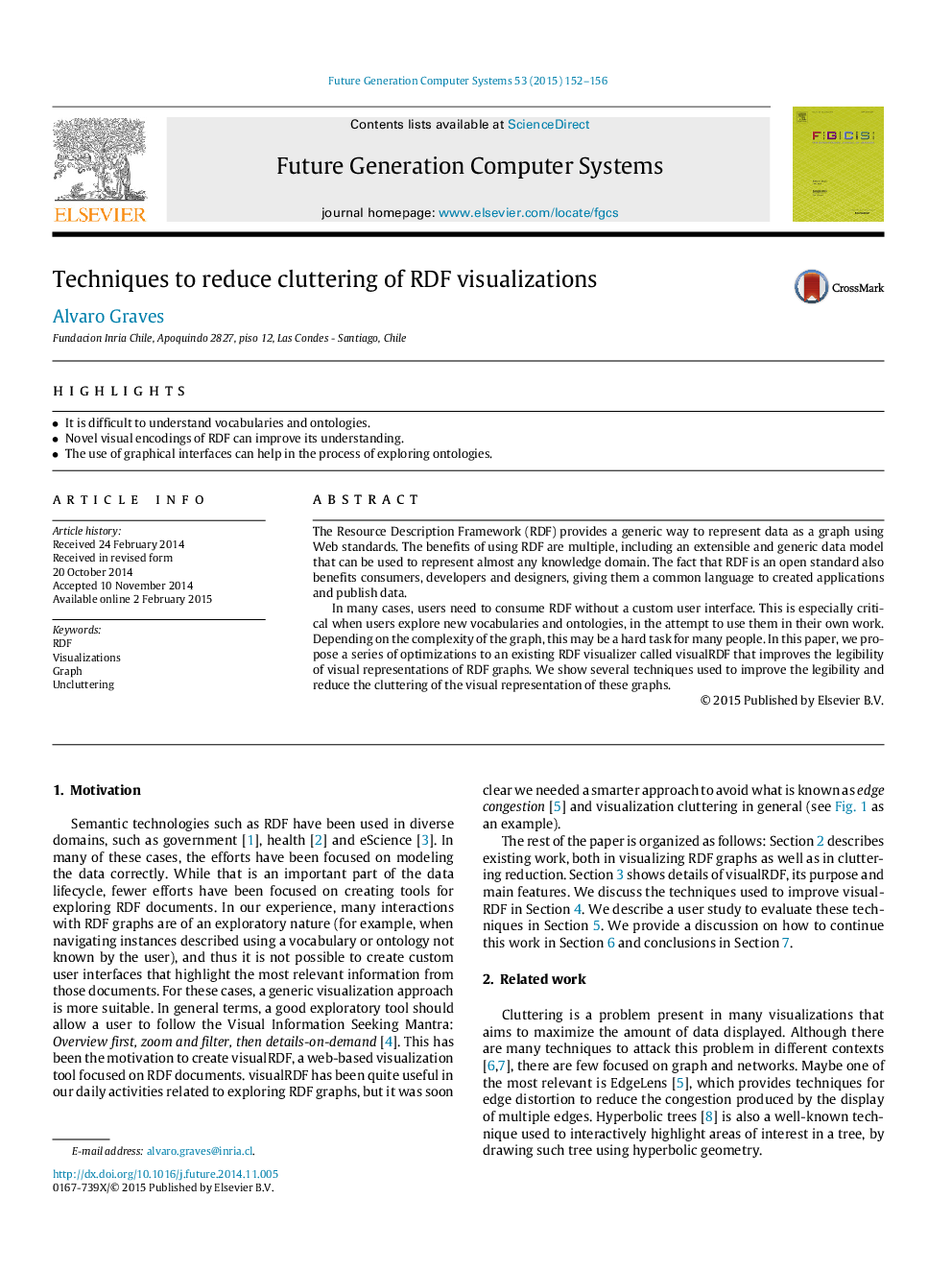| Article ID | Journal | Published Year | Pages | File Type |
|---|---|---|---|---|
| 424578 | Future Generation Computer Systems | 2015 | 5 Pages |
•It is difficult to understand vocabularies and ontologies.•Novel visual encodings of RDF can improve its understanding.•The use of graphical interfaces can help in the process of exploring ontologies.
The Resource Description Framework (RDF) provides a generic way to represent data as a graph using Web standards. The benefits of using RDF are multiple, including an extensible and generic data model that can be used to represent almost any knowledge domain. The fact that RDF is an open standard also benefits consumers, developers and designers, giving them a common language to created applications and publish data.In many cases, users need to consume RDF without a custom user interface. This is especially critical when users explore new vocabularies and ontologies, in the attempt to use them in their own work. Depending on the complexity of the graph, this may be a hard task for many people. In this paper, we propose a series of optimizations to an existing RDF visualizer called visualRDF that improves the legibility of visual representations of RDF graphs. We show several techniques used to improve the legibility and reduce the cluttering of the visual representation of these graphs.
